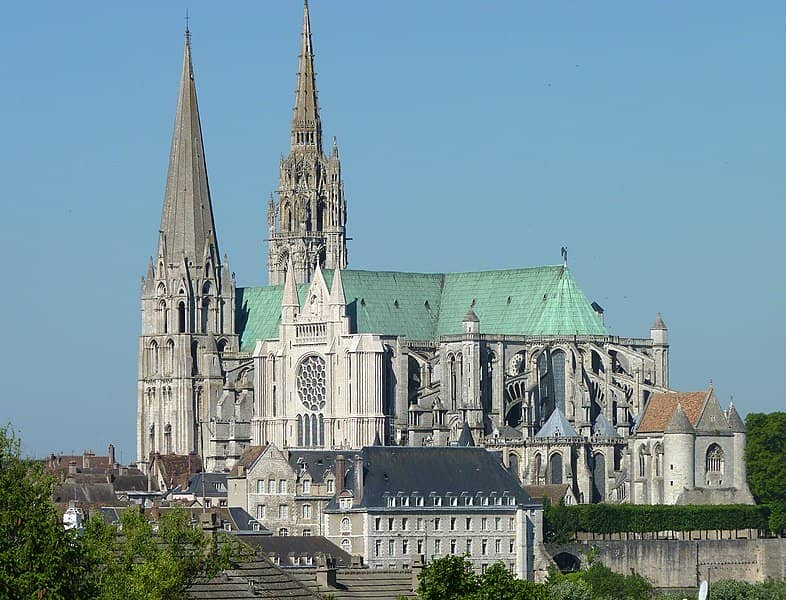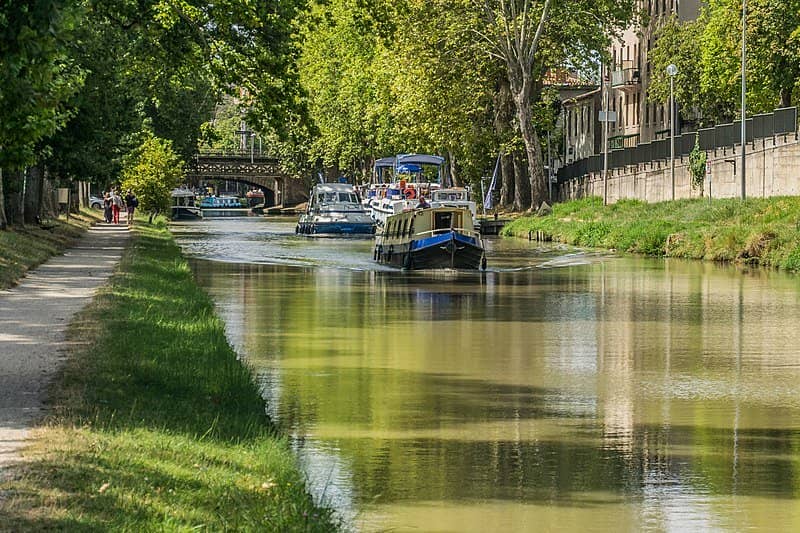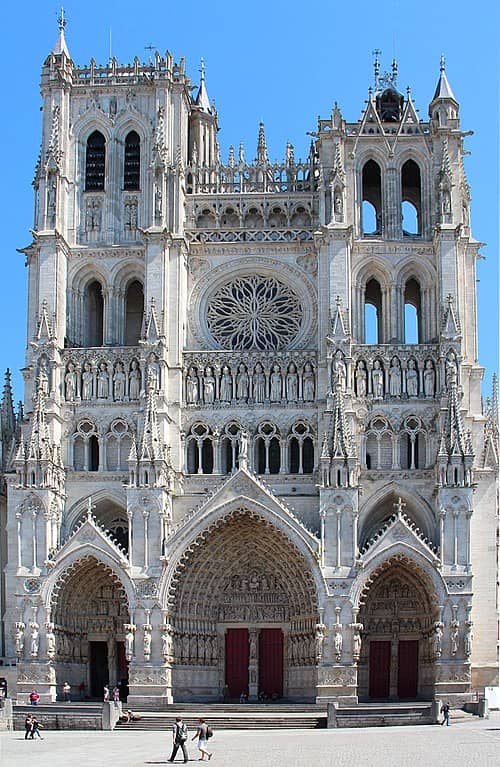Are you looking for the best UNESCO World Heritage Sites to visit in France?
France attracts people of all ages and races with its iconic landmarks, world-class art and architecture, amazing food, glitzy ski resorts, gorgeous beaches, and outstanding countryside. Anywhere you go in France, there are amazing stories to tell, culture to experience, and history to learn.
All these things make France rank number 5 in the list of countries with the most UNESCO World Heritage Sites.
France has a total of 49 properties inscribed on the UNECO World Heritage List – 42 of which are cultural sites, 6 are natural, and 1 mixed. There are still 33 properties submitted on the Tentative List currently. Let’s have a look at the 13 best UNESCO World Heritage Sites in France.
Things you'll find in this article
13 Best UNESCO World Heritage Sites in France

Cultural World Heritage Sites in France
1. Carcassonne

The walled City of Carcassonne has been around since the pre-Roman period. This fortified settlement was built on the hill where Carcassonne now stands, in southern France’s Languedoc area, part of the Occitanie region.
Carcassonne is considered exceptionally important, thanks to the lengthy restoration program undertaken by one of the fathers of the modern science of conservation – Eugène Viollet-le-Duc.
An excellent example of a medieval fortified town, Carcassonne features massive fortifications around the castle and the surrounding buildings. The walls these defences were built on date to the Late Antiquity. The city also boasts well-preserved medieval streets and a marvelous Gothic cathedral.
Carcassonne was named one of France’s UNESCO World Heritage Sites in 1997.
2. Mont Saint-Michel

Mont Saint-Michel and its bay were given the UNESCO World Heritage Site designation in 1979.
Dubbed the “Wonder of the West,” Mont Saint-Michel is a Gothic-style Benedictine abbey devoted to St. Michael the Archangel. The Benedictine abbey was founded in the year 966. It was erected on a sanctuary with some vestiges of the Romananesque period still seen today.
In accordance with the tradition of worship sites dedicated to St. Michael, the Mont Saint-Michel sanctuary is located in a difficult place of access – built on a rocky islet in the middle of vast sandbanks between Normandy and Brittany.
Mont Saint-Michel was one of the most important places of Christian civilization in the Middle Ages. It still remains one of the most popular destinations for religious tourism.
3. The banks of the River Seine in Paris

The River Seine has played both a defensive and an economic role eversince the first human settlements in Paris.
Paris was developed between the 16th and 20th centuries on a bend in the River Seine, between the confluence of the Marne and the Oise Rivers, with a huge number of major monuments built on the banks and on the perspectives overlooking the river.
The buildings along the Seine, such as the Cathedral of Notre-Dame and the St. Chapelle, catapulted the spread of Gothic architecture. The Place de la Concorde and the vista at the Invalides, on the other hand, influenced the urban development of other European capitals.
The western portion of Paris is marked by Georges-Eugène Haussmann’s urban planning, which inspired the construction of the great cities in the New World, particularly in Latin America.
Other architectural and urban masterpieces on the banks of the Seine that were built from the Middle Ages to the 20th century include the Louvre, the Eiffel Tower, the Pont Alexandre III, the Palais de l’Institut, the Palais de Chaillot, Ecole Militaire, the Monnaie (the Mint), and the Grand Palais of the Champs Elysées. These were all of great importance in the evolution and history of the French capital.
The banks of the River Seine were listed a UNESCO World Heritage Site in 1991.
4. Notre-Dame de Chartres Cathedral

The Notre-Dame de Chartres Cathedral in Chartres, in the French region of Centre-Val-de-Loire, was partially built in 1145. It was then reconstructed in 1194 after the fire. The reconstruction, which took over 26 years, was all worth it. The cathedral was given a UNESCO World Heritage Site designation in 1979.
The Chartres Cathedral is an excellent example of French Gothic art, with its vast nave and porches adorned adorned with fine mid-12th-century sculptures, and the fantastic 12th- and 13th-century stained-glass windows which have all been well-preserved and thus create a masterpiece.
5. Bordeaux

The port city of Bordeaux in southwest France, or Port of the Moon, is an inhabited historic city as well as an outstanding urban and architectural ensemble.
Built in the age of the Enlightenment, it features more protected buildings than any other French city apart from Paris.
Bordeaux, known as a city of exchange and commerce, became a UNESCO World Heritage Site in 2007. The city boasts 347 listed historic buildings which have retained their original functions since their construction.
The city’s urban plans and architectural ensembles that have stemmed from the early 18th century onwards make Bordeaux a perfect example of classical and neo-classical trends.
6. Vézelay

The town of Vézelay in Bourgogne-Franche-Comté region, along the 11th-century Romanesque Basilica of St. Magdalene, is a designated UNESCO World Heritage Site since 1979.
Teeming with history, the Benedictine abbey of Vézelay was founded in the 9th century and got hold of St. Mary Magdalene’s relics soon after. The relics made the place such an important pilgrimage site after Pope Stephen IX confirmed their authenticity in 1058.
The Madeleine of Vézelay, a 12th-century monastic church, along with its sculpted capitals and portal, is an outstanding example of Burgundian Romanesque art and architecture.
The Vézelay Abbey is one of the most popular UNESCO World Heritage Sites in France, being a major starting point for pilgrims on the Way of St. James to Santiago de Compostela. The influx of pilgrims continues to this day.
7. Palace and Park of Versailles

As a principal residence of the French kings from the time of Louis XIV to Louis XVI, the Palace of Versailles has been embellished by several generations of architects, sculptors, decorators, and landscape architects. For more than a century, the palace has provided Europe with a model of the ideal royal residence.
The 18th-century Palace of Versailles is in the Île-de-France region, southwest of the French capital. It includes the zone enclosing the prestigious ensemble of the Palace, the Trianon châteaux, and their gardens, as well as a narrow band of land which serves as a viewpoint from the extremity of the Grand Canal.
The palace gardens have axial pathways that extend as far as the eye can see, complete with flower beads, low hedges, and fountains as well as small streams and large lakes.
The property, which has been given a UNESCO World Heritage Site designation since 1979, is the result of 150 years of work commanded by the French kings and entrusted to the country’s greatest of artists.
8. Canal du Midi

Canal du Midi in France’s Occitanie region is a 360-kilometer network of navigable waterways that connect the Mediterranean and the Atlantic through 328 structures. It was constructed from 1667 to 1694. In 1996, the canal became a UNESCO World Heritage Site.
As one of the most extraordinary civil engineering achievements of modern times, the Canal du Midi symbolizes the technological breakthrough that paved the way for the Industrial Revolution and contemporary technology.
It also associates technological innovation with great aesthetic concern in both architecture and man-made landscapes, something you cannot find in a lot of places.
9. Saint Emilion

Situated in the fertile region of Nouvelle Aquitaine, Saint Emilion is a stunning landscape dedicated entirely to wine-growing, a tradition that was introduced by the Romans and intensified in the Middle Ages, and which remains strong today.
Its towns and villages are also filled with various impressive historic monuments and early 19th-century stone houses.
The Saint-Emilion area is an important location on the pilgrimage route to Santiago de Compostela. Various churches, monasteries, and hospices were constructed on the site from the 11th century onwards.
Saint-Emilion was named a UNESCO World Heritage Site in 1999.
10. Amiens Cathedral

Amiens Cathedral, situated in the heart of the historical Picardy in the Hauts-de-France region, is one of the largest in the country. It is also one of the most complete Gothic cathedrals from the 13th century.
A UNESCO World Heritage Site since 1981, Amiens Cathedral is noted for the beauty of its three-tier interior elevation, the magnificent fine display of sculptures in the south transept and on the principal façade, and the coherence of its entire plan.
Built in less than a century by master builders of the time, Amiens Cathedral is an outstanding example of a perfectly conserved Gothic cathedral.
Natural World Heritage Sites in France
11. Gulf of Porto

Gulf of Porto – including the Calanche of Piana, Gulf of Girolata, and the Scandola Reserve, which are part of the Regional Natural Park of Corsica in the Scandola peninsula – has been inscribed as a UNESCO World Heritage Site since 1983 for both its geological and ecological values.
Outstanding vegetation as well as a great number of seagulls, sea eagles, and cormorants can be found in the area. The pristine waters host a very rich marine life. Gulf Porto also has islets and inaccessible caves that add to the property’s value.
12. Chaîne des Puys

Chaîne des Puys, located in the Auvergne-Rhône-Alpes region in central France, is the site of the Limagne fault tectonic arena that comprises the lengthy Limagne fault, the alignments of the Chaîne des Puys volcanoes, and the inverted relief of the Montagne de la Serre.
Created some 35 million years go in the aftermath of the formation of the Alps, the geological features of Chaîne des Puys show the phenomenon called continental rifting, or how the continent cracks before it collapses and allows magma from the very depths to rise and cause uplifting at the surface.
It is one of the five major stages of plate tectonics, which is an essential paradigm for the history of the Earth.
The property has a long history of conservation measures and its geological features remain intact.
They are preserved from urbanization as the area is sparsely inhabited. There is also very superficial erosion which has not altered the structures. Human impact is limited and does not compromise the geological value of the Chaîne des Puys.
In 2018, Chaîne des Puys and the Limagne fault tectonic arena were given a UNESCO World Heritage Site designation.
Mixed World Heritage Sites in France
13. Mont Perdu in the Pyrénées

The exemplary mountain landscape spans the French and Spanish borders, centered around the peak of Mount Perdu. This mountain is a calcareous massif that rises to almost 11,000 feet.
The area – 30,639 hectares in total – houses two of the largest and deepest canyons in Europe, and three major cirque walls. It is also a pastoral landscape that shows an agricultural way of life that was once widespread in the upland regions of Europe but now remains strong only in this part of the Pyrénées, thus providing impressive insights into past European society.
The site has been named a UNESCO World Heritage Site since 1997.

Hi, I’m Christine – a full-time traveler and career woman. Although I’m from the Philippines, my location independent career took me to over 40 countries and lived in 4 continents in the last 10 years, including France. A self-proclaimed Francophile, I love everything France.
